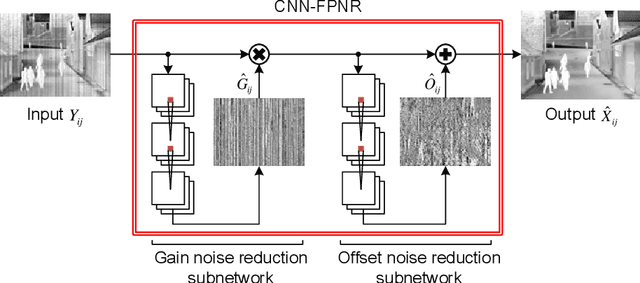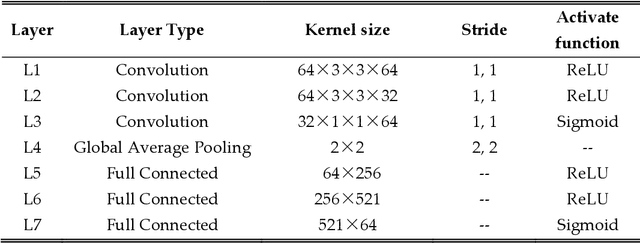Zesheng Liu
ST-GRIT: Spatio-Temporal Graph Transformer For Internal Ice Layer Thickness Prediction
Jul 10, 2025Abstract:Understanding the thickness and variability of internal ice layers in radar imagery is crucial for monitoring snow accumulation, assessing ice dynamics, and reducing uncertainties in climate models. Radar sensors, capable of penetrating ice, provide detailed radargram images of these internal layers. In this work, we present ST-GRIT, a spatio-temporal graph transformer for ice layer thickness, designed to process these radargrams and capture the spatiotemporal relationships between shallow and deep ice layers. ST-GRIT leverages an inductive geometric graph learning framework to extract local spatial features as feature embeddings and employs a series of temporal and spatial attention blocks separately to model long-range dependencies effectively in both dimensions. Experimental evaluation on radargram data from the Greenland ice sheet demonstrates that ST-GRIT consistently outperforms current state-of-the-art methods and other baseline graph neural networks by achieving lower root mean-squared error. These results highlight the advantages of self-attention mechanisms on graphs over pure graph neural networks, including the ability to handle noise, avoid oversmoothing, and capture long-range dependencies. Moreover, the use of separate spatial and temporal attention blocks allows for distinct and robust learning of spatial relationships and temporal patterns, providing a more comprehensive and effective approach.
GRIT: Graph Transformer For Internal Ice Layer Thickness Prediction
Jul 10, 2025Abstract:Gaining a deeper understanding of the thickness and variability of internal ice layers in Radar imagery is essential in monitoring the snow accumulation, better evaluating ice dynamics processes, and minimizing uncertainties in climate models. Radar sensors, capable of penetrating ice, capture detailed radargram images of internal ice layers. In this work, we introduce GRIT, graph transformer for ice layer thickness. GRIT integrates an inductive geometric graph learning framework with an attention mechanism, designed to map the relationships between shallow and deeper ice layers. Compared to baseline graph neural networks, GRIT demonstrates consistently lower prediction errors. These results highlight the attention mechanism's effectiveness in capturing temporal changes across ice layers, while the graph transformer combines the strengths of transformers for learning long-range dependencies with graph neural networks for capturing spatial patterns, enabling robust modeling of complex spatiotemporal dynamics.
Multi-branch Spatio-Temporal Graph Neural Network For Efficient Ice Layer Thickness Prediction
Nov 06, 2024Abstract:Understanding spatio-temporal patterns in polar ice layers is essential for tracking changes in ice sheet balance and assessing ice dynamics. While convolutional neural networks are widely used in learning ice layer patterns from raw echogram images captured by airborne snow radar sensors, noise in the echogram images prevents researchers from getting high-quality results. Instead, we focus on geometric deep learning using graph neural networks, aiming to build a spatio-temporal graph neural network that learns from thickness information of the top ice layers and predicts for deeper layers. In this paper, we developed a novel multi-branch spatio-temporal graph neural network that used the GraphSAGE framework for spatio features learning and a temporal convolution operation to capture temporal changes, enabling different branches of the network to be more specialized and focusing on a single learning task. We found that our proposed multi-branch network can consistently outperform the current fused spatio-temporal graph neural network in both accuracy and efficiency.
Learning Spatio-Temporal Patterns of Polar Ice Layers With Physics-Informed Graph Neural Network
Jun 21, 2024Abstract:Learning spatio-temporal patterns of polar ice layers is crucial for monitoring the change in ice sheet balance and evaluating ice dynamic processes. While a few researchers focus on learning ice layer patterns from echogram images captured by airborne snow radar sensors via different convolutional neural networks, the noise in the echogram images proves to be a major obstacle. Instead, we focus on geometric deep learning based on graph neural networks to learn the spatio-temporal patterns from thickness information of shallow ice layers and make predictions for deep layers. In this paper, we propose a physics-informed hybrid graph neural network that combines the GraphSAGE framework for graph feature learning with the long short-term memory (LSTM) structure for learning temporal changes, and introduce measurements of physical ice properties from Model Atmospheric Regional (MAR) weather model as physical node features. We found that our proposed network can consistently outperform the current non-inductive or non-physical model in predicting deep ice layer thickness.
Physics-Informed Machine Learning On Polar Ice: A Survey
Apr 30, 2024Abstract:The mass loss of the polar ice sheets contributes considerably to ongoing sea-level rise and changing ocean circulation, leading to coastal flooding and risking the homes and livelihoods of tens of millions of people globally. To address the complex problem of ice behavior, physical models and data-driven models have been proposed in the literature. Although traditional physical models can guarantee physically meaningful results, they have limitations in producing high-resolution results. On the other hand, data-driven approaches require large amounts of high-quality and labeled data, which is rarely available in the polar regions. Hence, as a promising framework that leverages the advantages of physical models and data-driven methods, physics-informed machine learning (PIML) has been widely studied in recent years. In this paper, we review the existing algorithms of PIML, provide our own taxonomy based on the methods of combining physics and data-driven approaches, and analyze the advantages of PIML in the aspects of accuracy and efficiency. Further, our survey discusses some current challenges and highlights future opportunities, including PIML on sea ice studies, PIML with different combination methods and backbone networks, and neural operator methods.
Fixed Pattern Noise Reduction for Infrared Images Based on Cascade Residual Attention CNN
Oct 22, 2019



Abstract:Existing fixed pattern noise reduction (FPNR) methods are easily affected by the motion state of the scene and working condition of the image sensor, which leads to over smooth effects, ghosting artifacts as well as slow convergence rate. To address these issues, we design an innovative cascade convolution neural network (CNN) model with residual skip connections to realize single frame blind FPNR operation without any parameter tuning. Moreover, a coarse-fine convolution (CF-Conv) unit is introduced to extract complementary features in various scales and fuse them to pick more spatial information. Inspired by the success of the visual attention mechanism, we further propose a particular spatial-channel noise attention unit (SCNAU) to separate the scene details from fixed pattern noise more thoroughly and recover the real scene more accurately. Experimental results on test data demonstrate that the proposed cascade CNN-FPNR method outperforms the existing FPNR methods in both of visual effect and quantitative assessment.
 Add to Chrome
Add to Chrome Add to Firefox
Add to Firefox Add to Edge
Add to Edge